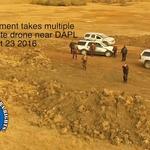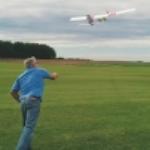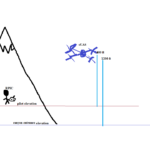By Vincent Young
With the implementation of Part 107 the FAA has opened the skies to the commercial use of drones, however there are still many legal hurdles, regulations, and guidelines that must be followed. The FAA has yet to update the rules governing hobbyist use of drones since the implementation the FAA Modernization and Reform Act of 2012. Are these regulations by the FAA legal? Is there too much regulation to allow for innovation? Is there enough regulation to assure safety? What would a better policy look like?
Are these regulations by the FAA legal? Um … probably. The FAA governs the operation and development of the National Airspace System. Recently that has included the incorporation of unmanned aerial vehicles (UAVs) into the national airspace. There are two laws that try to incorporate UAVs into the airspace. Section 336 of the FAA Modernization and Reform Act of 2012 governs the hobbyist use of UAVs and Part 107 governs commercial use of UAVs. Section 336 allows hobbyists to fly UAVs in the national airspace that weigh less than 55 lb., are flown under 400 ft., are flown in daylight hours, remain within visual line of sight, are not flown over people, remain clear of manned aircraft, and are not flown within 5 miles of an airport unless prior notification has been given to the airport operator. While severely limiting, this law does not infringe on any constitutional rights and does not lie outside the jurisdiction of the FAA, and therefore is legal. Part 107 allows for the commercial use of UAVs in class G airspace as long as the UAVs weigh less than 55 lb., are flown under 400 ft., are flown in daylight hours, remain within visual line of sight, remain clear of manned aircraft, and are not flown over people. Part 107 requires the UAV operator to have remote pilot airman certificate, but allows the operator of the UAV to apply for an exemption to one of the previously stated rules. This law is far less limiting than Section 336 as class G airspace does not take into account the presence of heliports or small airports without control towers whereas the definition of “airport” as used in section 336 includes heliports and small airports without control towers. Part 107 is also not illegal and is less limiting than Section 336. Before Part 107 came into effect there was a ban on commercial use of UAVs including for journalism. This led to some concern that constitutional rights of free speech and freedom of the press were being infringed upon. However, there were no lawsuits challenging this ban before Part 107 came into effect.
Is there too much regulation to allow for innovation? There is not too much regulation to allow for any innovation, but are we at our maximum innovative potential? Probably not. Current innovation relevant to UAVs can be split into two categories, development of new technologies that are incorporated into UAVs, and the use of UAVs for new and innovative purposes. The first category, the development of new technologies that are incorporated into UAVs, has most likely been impacted very little by the FAA. The vast majority of time developing new technologies is spent in the lab with a fraction of time spent testing the technology. Technologies such as object detection, collision avoidance, and swarmed flight have been somewhat successfully developed and tested indoors. Finding new and innovative uses for UAVs has not been so lucky. Amazon’s highly publicized desire to use UAVs for package delivery has been severely impacted by the FAA ban and subsequent regulation of commercial use of UAVs. Amazon was unable to test its UAVs under the FAA regulations and has since started testing its delivery UAVs in the UK. There may have been countless other small businesses/corporations that have seen potential uses for UAVs but have been unable or unwilling to use UAVs under the current regulations.
Is there enough regulation to assure safety? Definitely. Under the current regulations, both commercial and hobbyist UAVs must avoid people weather they are in a maned aircraft, in a stadium, car, building, or out in the open. If these rules are followed, there is no possible way for accidents to occur. The only exception to this is if a commercial user of UAVs applies for an exemption under Part 107 that allows them to fly over people. However, for this exemption to be granted the commercial user must show they can safely fly over people. This minimizes the risk of an accident. Of course, these regulations can only assure safety if they are followed. At this point we must consider the possibility that there is so much regulation that it is just ignored. If we consider a hypothetical scenario where a hobbyist in an urban setting buys a commercially available UAV that is a slightly over the weight of 0.55 pounds such that all of the FAA regulations should apply to it. This hobbyist could follow FAA guidelines, check the B4U fly app, and drive out of the urban setting and away from heliports/airports until B4U fly deems it safe to fly. They could then fly their UAV for 6-9 min until the battery needs to be charged and drive all the way back to the urban environment. It is unlikely that the hobbyist would realistically follow all of these regulations and may instead pop open their window and fly their UAV from there with little regard to what is below (videos of people doing this in New York are readily available on YouTube). If there were slightly less regulations to the point that a local park, large field, or vacant lot is an acceptable place to fly a UAV, it is much more likely that the hobbyist would travel to one of these locations and more safely fly their UAV.
What would a better policy look like? A better policy would allow hobbyist and commercial UAVs to operate in class G airspace. The only reason this is not currently the case is the concern that a hobbyists may interfere with manned aircraft such as helicopters and small planes. It is then conceivable that hobbyist UAV users should be able to fly their UAVs in class G airspace as long as they do not fly above the height of surrounding trees or structures. This should be sufficient to keep the UAVs away from manned aircraft because maned aircraft do not fly under a tree line or between/under the top of structures/buildings.






